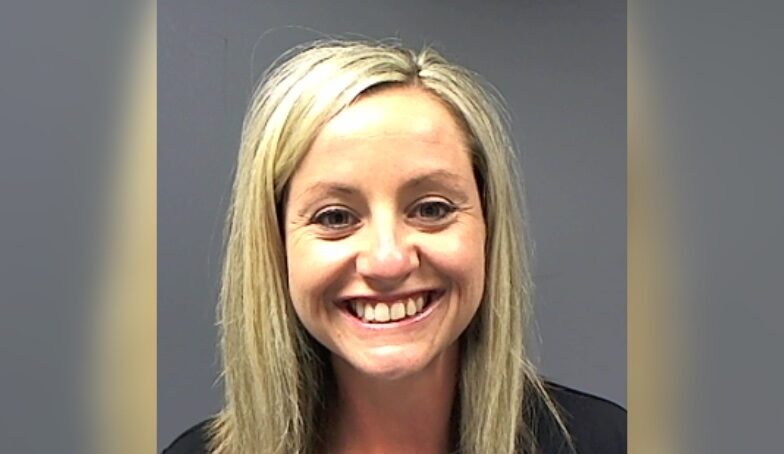Minnesota native Alicia Beckmann was about to celebrate her tenth anniversary working for Minnesota Correctional Facility––Shakopee, the state’s only facility for female offenders, when she was “blindsided” by the sudden presence of male inmates.
As a full-time teacher, Beckmann led high school-equivalent (GED) classes tailored to Shakopee’s female inmates, many of whom she said were subjected to emotional and sexual abuse at the hands of their male partners. When six male inmates transferred into Shakopee during 2023, one of them ended up in her classroom that winter, prompting the women she had cultivated relationships with to tell her they feared for their safety.
It’s not hard to see why. In Minnesota, incarcerated women only have one place to go: Shakopee. The prison, Beckmann said, is already at capacity and has the least square footage per person of any correctional facility in the state. To make matters worse, since there’s only one women’s facility, women aren’t separated according to their custody level. Historically, male offenders in Minnesota are sent to specific prisons according to their custody levels, but if they transfer to the women’s facility, there’s no separation based on custody level.
“I was so angry that I couldn’t change what was going on there, and I couldn’t fight for my students,” Beckmann said.
It was that moment, Beckman added, that she realized Minnesota’s policy allowing trans-identified males to be housed in women’s prisons had made it impossible for her to do her job responsibly.

The first two men who arrived at Shakopee, Christina Lusk and Bradley Sirvio, were assigned to the women’s facility in the wake of a 2023 discrimination lawsuit filed by Lusk. Represented by the radical left-wing nonprofit Gender Justice, Lusk sued the state in order to be transferred to Shakopee. Lusk even secured a taxpayer-funded vaginoplasty and breast “revision” procedure to affirm his transgender identity.
The lawsuit made national headlines after it was revealed that Minnesota Gov. Tim Walz’s administration sent more than $500,000 of taxpayer money to Gender Justice.
One year later, the Walz administration went a step further and implemented a radical policy titled “Management and Placement of Incarcerated People Who Are Transgender, Gender Diverse, Intersex, or Nonbinary.” The policy allowed at least four more men, including convicted murderers, to transfer to Shakopee based on their self-declared gender identity.
According to Beckmann, correctional staff didn’t receive “training” or an “explanation” before the male inmates were transferred into female facilities. “Ninety-nine percent of the staff I talked to [about the presence of male inmates] were just in disbelief,” she added.
Beckmann said she and other Shakopee staffers felt like they had no choice but to ignore the “overall wrongness” of male inmates living in a female-only prison –– otherwise, they feared potential consequences that could lead to losing their jobs, and their pensions. The prison is a “very chain of command agency,” Beckmann said, so “not following directives and policies can be seen as not fulfilling job duties or insubordination.”
Beckmann’s female students initially tried to embrace their first male classmate. But shortly after his arrival, he threatened to fight security staff and later ended up in segregation.
Beckmann’s students took the opportunity to try to talk to her about their feelings on the matter. The traumatization and the re-victimization of women, she said, was just appalling.
“The women are scared to speak up,” Beckmann said. “Many women are incarcerated because of the men they spend their time with, and we all have freedom of choice, but I guarantee that probably 75% of our population committed a crime because there was violence against them by a man, or they felt coerced into doing something for that man.”
Beckmann said she was scared and angry, fighting back tears. She advised them to advocate for their rights and voice their concerns.
“I had to walk a very fine line of addressing their concerns, showing that I empathize,” she said. But at that point, she wasn’t sure what more she could do.
However, Beckmann quickly realized that any cost to herself paled in comparison to the costs facing the female inmates whose privacy and rights were being violated.
After she attempted to bring her concerns to the prison administration and representatives of her teachers union, she said she was met with a lot of pushback and was made to feel like she would face career consequences if she refused to teach the male inmate.
“It’s not that I wanted to refuse education,” she said. “Education is important, and if [the male inmate] was in a male facility or was even in the community where co-ed is normal, I would have zero issues. But we are not a co-ed facility. We are not designed to be a co-ed facility. And there’s a reason for it.”
Over the course of Beckmann’s time in corrections, she saw various men in other facilities around the state who appeared to present as female with makeup, long hair, or other feminizing elements. The men transferring to Shakopee, she said, had little in common with them.
“When I see these men come through our doors, nothing about them whatsoever indicates to me they’re transgender,” Beckmann said, adding that their behaviors, demeanor, and overall presence didn’t align with what would be considered transgender. “I’m not seeing those [feminine-presenting] men transferring to Shakopee.”

Beckmann made the difficult decision this summer to resign from her role at Shakopee, and she is using her newfound freedom from institutional pressure to be a voice not only for incarcerated women but also a voice for her former coworkers and students who can’t speak out.
“Why do we have gender-responsive classes?” she asked. “Why do we say we are going to rehabilitate inmates, but then ‘Hey, we’re going to put a male sex offender who committed violent sexual crimes against females down the hall from you?’”
IW Features reached out to Minnesota’s Department of Corrections, which stated that the development of its transgender policy “included a comprehensive analysis of emerging case law from legal actions brought against corrections agencies across the nation.” Additionally, it denied the allegation that correctional staff did not receive training.
According to Beckmann, biological men don’t belong in women’s prisons. While she believes it’s their right to present or identify a certain way, at the end of the day, she said it’s not safe nor conducive to the number one goal of the Department of Corrections: rehabilitating offenders so they can be successful upon release.
“This policy was single-handedly asking my coworkers and me to check our morals at the door and pretend that this was okay,” Beckmann said. “As a teacher, I could no longer offer a safe environment for my students, so I knew I no longer had a choice to stay.”










